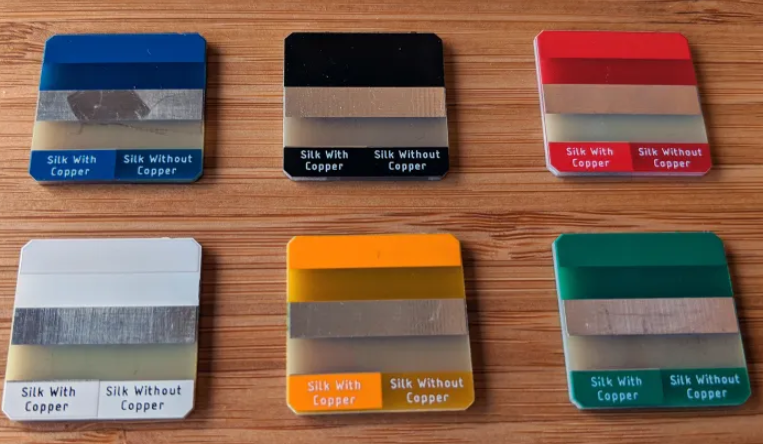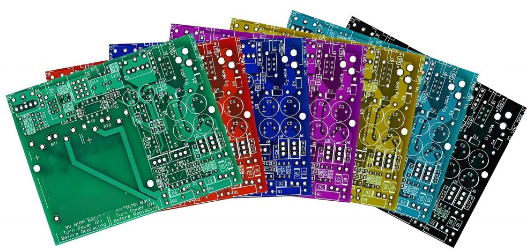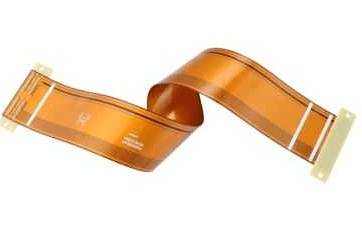The Truth About PCB Colors: Does Color Indicate Quality?
Introduction
Printed Circuit Boards (PCBs) are fundamental components in nearly all modern electronic devices, from smartphones to industrial machinery. One of the most visually striking features of PCBs is their color, which varies from the common green to red, blue, black, and even more exotic hues. This visible characteristic often leads to questions about whether PCB color correlates with quality or performance. Many consumers and even some professionals hold misconceptions that darker or certain colored PCBs are inherently better quality. This article will examine the reality behind PCB colors, exploring their composition, manufacturing implications, and actual relationship (or lack thereof) with board quality.
Understanding PCB Color Basics
What Gives PCBs Their Color?
The color of a PCB comes primarily from the solder mask—a protective layer of polymer applied to the copper traces. This layer serves several critical functions:
- Prevents oxidation of copper traces
- Insulates conductors to prevent short circuits
- Protects against environmental factors like moisture and dust
- Provides contrast for component placement and inspection
While green has become the conventional default (accounting for about 70-80% of all PCBs), manufacturers offer numerous color options by using different pigment formulations in the solder mask resin.

Common PCB Colors and Their Characteristics
- Green: The traditional choice, using an epoxy-based solder mask with chromium-based pigments. Offers excellent contrast with white silkscreen.
- Red/Blue: Popular alternatives that provide good contrast. Red uses cadmium-based pigments while blue uses cobalt compounds.
- Black: Often perceived as “premium,” uses carbon-black pigments. Actually more challenging for inspection.
- White: Primarily used in LED applications for reflectivity. Prone to showing contaminants.
- Yellow/Orange: Less common, used when specific aesthetic or branding requirements exist.
The chemical composition varies between colors, but all quality solder masks must meet the same fundamental performance standards for insulation, durability, and thermal resistance.
Manufacturing Process and Color Implications
Solder Mask Application Methods
PCB colors are applied using one of three primary methods:
- Liquid Photoimageable Solder Mask (LPSM): Most common method where liquid mask is applied then cured with UV light through a photomask.
- Dry Film Solder Mask: A solid film laminated onto the board before imaging and development.
- Screen Printing: Older method where mask is squeegeed through a patterned screen.
Color consistency can vary slightly between these methods, but doesn’t inherently affect performance. The precision of application (particularly registration with copper layers) matters far more than color choice.
Does Color Affect Manufacturing Difficulty?
Certain colors present specific manufacturing challenges:
- Black PCBs: Absorb more heat during curing, requiring process adjustments. The dark color also makes automated optical inspection (AOI) more difficult as contrast with copper traces is reduced.
- White PCBs: Show contamination easily, requiring cleaner production environments. The reflective surface can also interfere with some inspection systems.
- Transparent/Clear Masks: Offer no visual contrast, making manual inspection nearly impossible.
However, these are process considerations for manufacturers rather than quality indicators for end users. A reputable manufacturer can produce any color PCB to the same high standards with proper process controls.

Debunking the Color-Quality Myth
Common Misconceptions
- “Black PCBs are higher quality”: This perception likely stems from seeing black PCBs in high-end electronics. In reality, color choice is usually aesthetic or functional (e.g., black for internal boards in set-top boxes to reduce visibility).
- “Green is only for cheap boards”: Green’s popularity comes from its optimal balance of cost, inspectability, and performance—not because it’s inferior.
- “Exotic colors mean better materials”: Specialty colors don’t imply superior base materials (FR-4, high-Tg, etc.) or copper quality.
What Actually Determines PCB Quality?
True quality indicators include:
- Material Specifications:
- Dielectric constant (Dk) and dissipation factor (Df)
- Glass transition temperature (Tg)
- Decomposition temperature (Td)
- Coefficient of thermal expansion (CTE)
- Manufacturing Precision:
- Trace width/spacing consistency
- Registration between layers
- Plating quality
- Hole wall integrity
- Testing and Certification:
- IPC class (1, 2, or 3) designation
- Electrical testing results
- Impedance control (for high-speed designs)
None of these critical parameters have any inherent connection to solder mask color.
Functional Considerations of PCB Colors
Inspection and Rework
Color choice impacts the practical aspects of working with PCBs:
- Visual Inspection:
- Green provides optimal contrast for identifying defects
- Dark colors (black, dark blue) reduce visibility of traces
- White can cause eye strain during prolonged inspection
- Automated Optical Inspection (AOI):
- Most systems calibrated for green PCBs
- Alternative colors may require system recalibration
- Some colors can increase false positives/negatives
- Rework and Debugging:
- Lighter colors generally make trace following easier
- Certain colors may interfere with microscope lighting
Thermal Properties
Different colors exhibit minor thermal differences:
- Heat Absorption:
- Darker colors absorb more infrared radiation during reflow
- Can lead to slightly different thermal profiles
- Modern reflow ovens compensate for these differences
- Heat Dissipation:
- Solder mask color has negligible effect on overall thermal performance
- Copper layers and substrate materials dominate thermal characteristics
These thermal effects are generally insignificant for most applications but might be considered in extreme thermal environments.
Industry Practices and Color Selection
Why Green Dominates
Several practical reasons maintain green’s popularity:
- Historical Precedent: Early solder mask formulations were green, creating industry-wide familiarity.
- Optimal Contrast: The green/white combination provides excellent visibility for both manual and automated inspection.
- Manufacturing Efficiency: Higher volume means better process optimization and lower costs.
- Supply Chain Factors: Green materials are more readily available with shorter lead times.
When Other Colors Are Preferred
Alternative colors are selected for specific reasons:
- Aesthetic/Branding: Consumer products often match PCBs to brand colors (e.g., red for gaming motherboards).
- Functional Requirements:
- White for LED applications to enhance reflectivity
- Black for light-sensitive applications or internal components
- Differentiation:
- Prototype versions might use different colors
- Revision changes sometimes marked by color shifts
- High-Density Designs: Some designers believe alternative colors help with complex layouts, though this is subjective.

Testing the Color-Quality Connection
Industry Studies and Data
Multiple industry studies have failed to show any correlation between solder mask color and:
- Mean time between failures (MTBF)
- Electrical performance parameters
- Environmental stress test results
- High-speed signal integrity
A 2018 IPC benchmarking study of 5000 boards across colors found no statistically significant difference in defect rates when manufacturing processes were properly controlled.
Expert Perspectives
Leading PCB engineers consistently emphasize:
“Color is a cosmetic characteristic that has no bearing on the electrical or mechanical performance of a properly manufactured board. The quality is determined by material selection, design rules, and process control—not the pigment in the solder mask.” – Dr. Henry Huang, Senior PCB Technologist
Conclusion
The persistent myth that PCB color indicates quality stems from superficial observations rather than technical reality. While solder mask color can affect inspectability and has minor process implications for manufacturers, it doesn’t inherently make a PCB better or worse. True quality depends on proper material selection, precise manufacturing, and thorough testing—factors completely independent of the board’s visible color.
For designers and purchasers, color selection should be based on:
- Functional requirements (e.g., reflectivity)
- Inspection needs
- Aesthetic considerations
- Cost/availability factors
Rather than chasing perceived quality through color choices, engineers should focus on specifying appropriate materials, working with reputable manufacturers, and implementing robust testing protocols. The most expensive black PCB can still be poorly made, while a standard green board from a quality supplier will outperform it in every meaningful metric.
In the world of PCBs, judging quality by color makes as much sense as judging a book by its cover—the real value lies in what’s beneath the surface.







